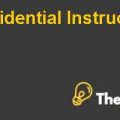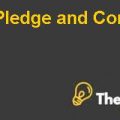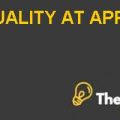Harvard Management Company (2010)
- What are the long-term investment objectives of Harvard Management Company (HMC)? What returns does it expect? How much risk it is ready to take? What are the factors that determine these long-term risks and return objectives?
Long-Term Investment Objectives
Every company has short and long term goals and objectives that guide the company through different situations. The basic objectives of the company are closely linked with the highest return that they can attain within the risk limits.
The financial structure of Harvard Management Company (HMC) was based on the endowment. Thus, both the short and long term objectives were devised to compliment the current endowment policy and size. In general terms, the objective of HMC was to maintain the intrinsic value of the endowment. The endowment fund’s income was divided as perpetuity, thus only a certain part of the fund could be used for spending purpose annually. The additional spending, if any due to different purposes like inflation increase or external pressures, must be subsided through higher return but within the acceptable level of risk.
Since the future real returns and gifts are unknown to HMC, hence the spending is controlled by allocating lower budget so that it can be used in the long run to avoid financial crunches. Thus, the long-term investment objective of Harvard Management Company is to maintain an optimal level of funds for smooth spending and keeping the real value of the endowment intact.
Expected Returns
As discussed, like every other company, HMC’s desired returns were as high as possible, but keeping the risk factor in mind, the portfolio’s return was set around 4.5% to 6%. This range is explicit in exhibit 18 and 19 of the case.
Risk Absorption
HMC was not ready to take risk at all. The portfolio managers used tools and techniques through which they could eliminate as much ancillary risk as possible. However, the standard deviation, that is the risk of deviation from the expected return ranged from 5.9% to 8.39% for the subsequent expected returns.
In all greater returns would support greater spending but also increase the risk, but the risk absorption of the endowment was to be kept low given the steep losses of the previous year.
- How well have HMC performed over the years?
The performance of HMC is measured by comparing the actual returns and the benchmark that it set through policy portfolio. Along with that, the performance was also reviewed against the peer groups so that the fact could be revealed if the improved performance was because of the low actual benchmarks or favorable market conditions for everyone.
By all means of measurements, HMC outperformed the portfolios that were deemed to generate higher returns as their risk levels were quite high. According to the Exhibit 7 of the case, HMC has outperformed both types of portfolio benchmarks in the last 46 years. Thus, HMC’s active management has resulted in large value addition to the endowment.
- Was Jane Mendillo right in spending much time and effort on developing a "Policy Portfolio"?
Jane Mendillo was right in spending so much time and effort on developing a "Policy Portfolio" because it provided the endowment fund with better returns and lower risk. The efficient management not only increased the returns but also reduced the cost of management. Usually, the funds were managed by external managers only; who charged a high fee for their service and were typical portfolio managers. The policy portfolio, according to which 33% of the assets were managed by internal managers, added value to the endowment fund.
The policy portfolio tended to resolve the concerns about the allocation of the endowment between internal and external managers, the illiquidity of the endowment fund, the effectiveness of HMC’s risk controls, and coordination with the university regarding its liquidity needs and risk tolerance. It helped HMC to set the target for long term allocation of the funds that would serve the purpose of endowment. The performance management and evaluation was also linked to the policy portfolios. These factors reflect the importance of the development of a policy portfolio.
- What factors might explain the changes in the actual asset mix of HMC between 1992 and 2010 as shown in Exhibit 3?
There are different factors in play that explain the changes in actual asset mix of HMC between 1992 and 2010. The objective of the endowment fund to keep the returns high and risks low is one of those factors. This is the most important factor in play. Along with that, different assets have different liquidity positions. Thus, the anticipated need of the liquidity by the fund is important while deciding the asset allocation. Obviously, a lower risk and higher liquidity will.....................
This is just a sample partial case solution. Please place the order on the website to order your own originally done case solution.














